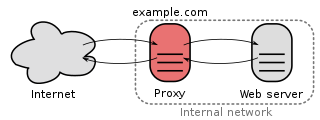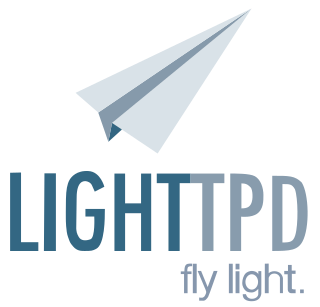This article is being considered for deletion in accordance with Wikipedia's deletion policy. Please share your thoughts on the matter at this article's entry on the Articles for deletion page. Feel free to improve the article, but the article must not be blanked, and this notice must not be removed, until the discussion is closed. For more information, particularly on merging or moving the article during the discussion, read the guide to deletion. |
The topic of this article may not meet Wikipedia's general notability guideline .(July 2018) (Learn how and when to remove this template message) |
| Developer(s) | Banu |
|---|---|
| Initial release | 1998 |
| Stable release | 1.8.4 (January 1, 2016) [±] |
| Repository | |
| Written in | C |
| Operating system | POSIX |
| Platform | Cross-platform |
| Type | proxy server |
| License | GNU General Public License |
| Website | tinyproxy |
Tinyproxy is a HTTP proxy server daemon for POSIX operating systems. Designed to be fast and small, it is useful when an HTTP/HTTPS proxy is required, but the system resources for a larger proxy are unavailable. Because of this it has been put to uses such as a tether on the iPhone, and on the OpenWrt. [1]
The Hypertext Transfer Protocol (HTTP) is an application protocol for distributed, collaborative, hypermedia information systems. HTTP is the foundation of data communication for the World Wide Web, where hypertext documents include hyperlinks to other resources that the user can easily access, for example by a mouse click or by tapping the screen. HTTP was developed to facilitate hypertext and the World Wide Web.

In computer networks, a proxy server is a server that acts as an intermediary for requests from clients seeking resources from other servers. A client connects to the proxy server, requesting some service, such as a file, connection, web page, or other resource available from a different server and the proxy server evaluates the request as a way to simplify and control its complexity. Proxies were invented to add structure and encapsulation to distributed systems.
The Portable Operating System Interface (POSIX) is a family of standards specified by the IEEE Computer Society for maintaining compatibility between operating systems. POSIX defines the application programming interface (API), along with command line shells and utility interfaces, for software compatibility with variants of Unix and other operating systems.
Contents
Tinyproxy is primarily designed to run on Unix-like systems. Released under the GNU General Public License, Tinyproxy is free software [2] and has been developed for a number of years. It is currently being maintained on GitHub as a publicly accessible project. Ohloh analyses it to be a project with "mature, well-established codebase and increasing year-over-year development activity." [3]

A Unix-like operating system is one that behaves in a manner similar to a Unix system, while not necessarily conforming to or being certified to any version of the Single UNIX Specification. A Unix-like application is one that behaves like the corresponding Unix command or shell. There is no standard for defining the term, and some difference of opinion is possible as to the degree to which a given operating system or application is "Unix-like".

The GNU General Public License is a widely used free software license, which guarantees end users the freedom to run, study, share and modify the software. The license was originally written by Richard Stallman of the Free Software Foundation (FSF) for the GNU Project, and grants the recipients of a computer program the rights of the Free Software Definition. The GPL is a copyleft license, which means that derivative work can only be distributed under the same license terms. This is in distinction to permissive free software licenses, of which the BSD licenses and the MIT License are widely used examples. GPL was the first copyleft license for general use.

Free software or libre software is computer software distributed under terms that allow users to run the software for any purpose as well as to study, change, and distribute it and any adapted versions. Free software is a matter of liberty, not price: users—individually or in cooperation with computer programmers—are free to do what they want with their copies of a free software regardless of how much is paid to obtain the program. Computer programs are deemed free insofar as they give users ultimate control over the first, thereby allowing them to control what their devices are programmed to do.




